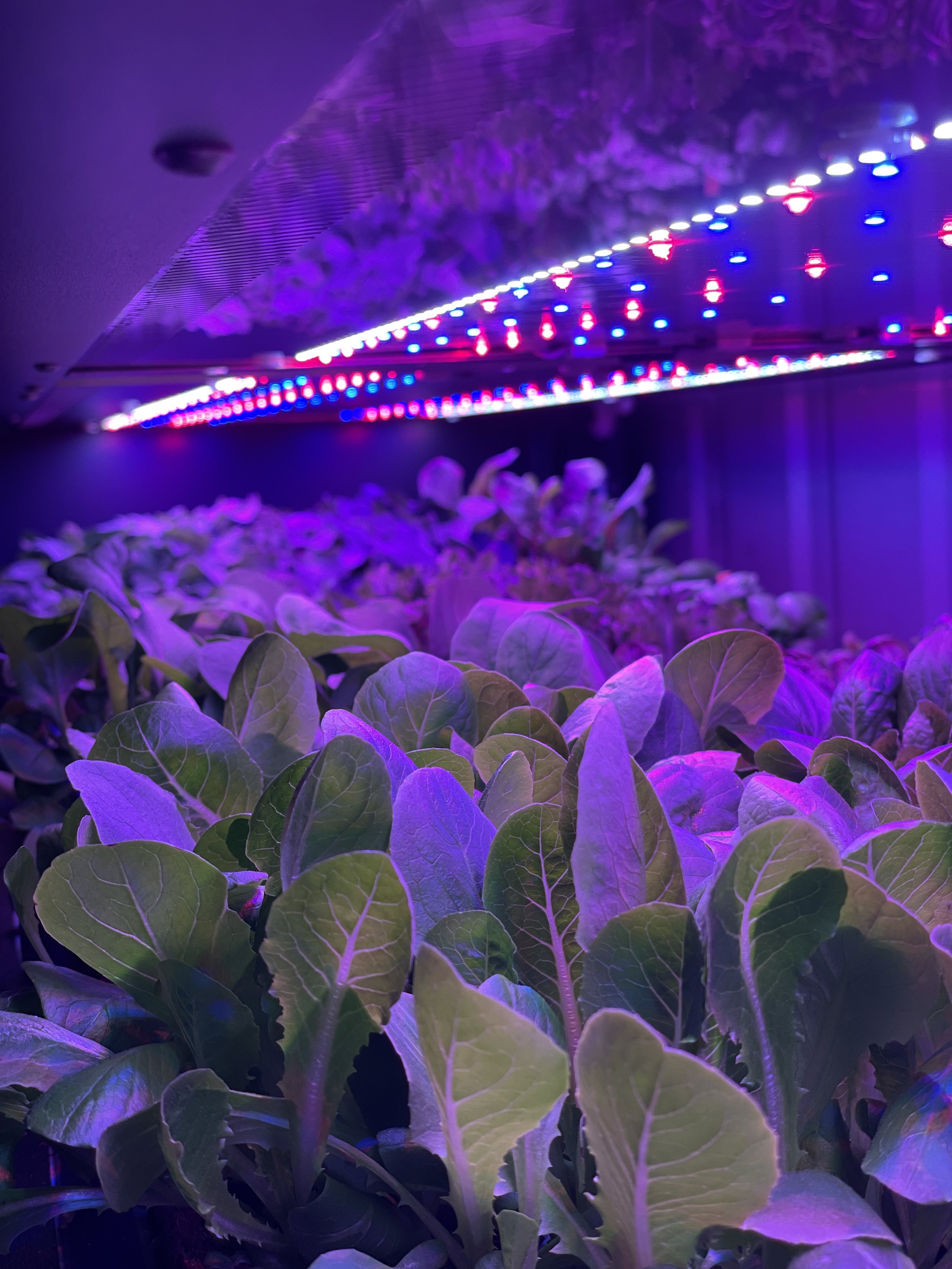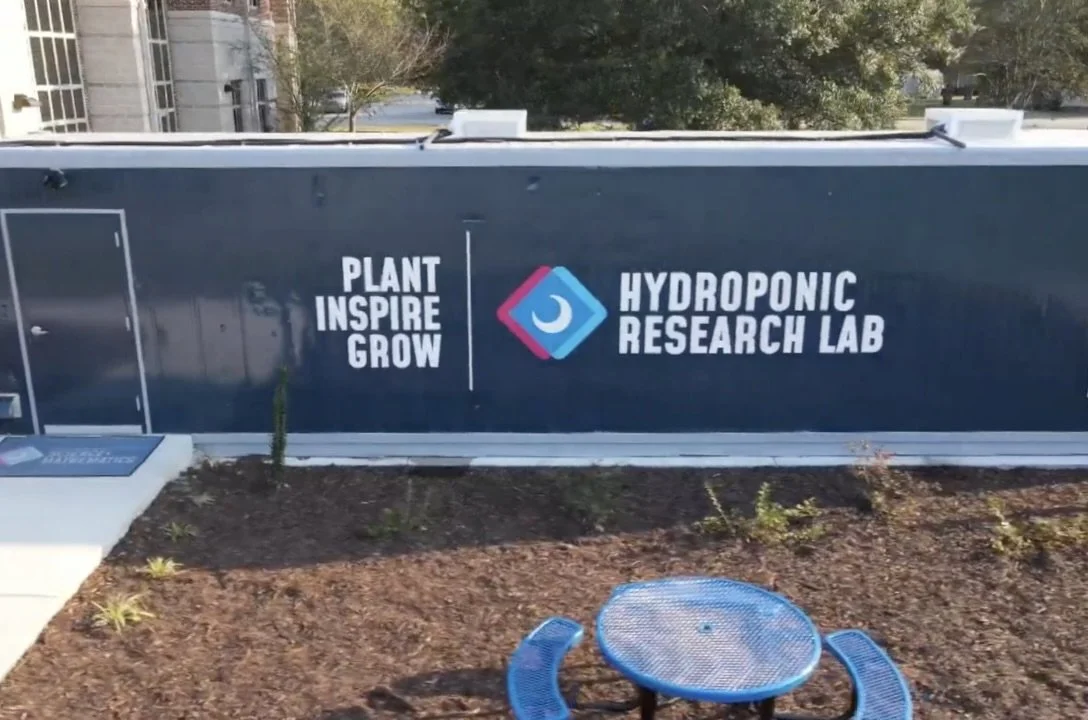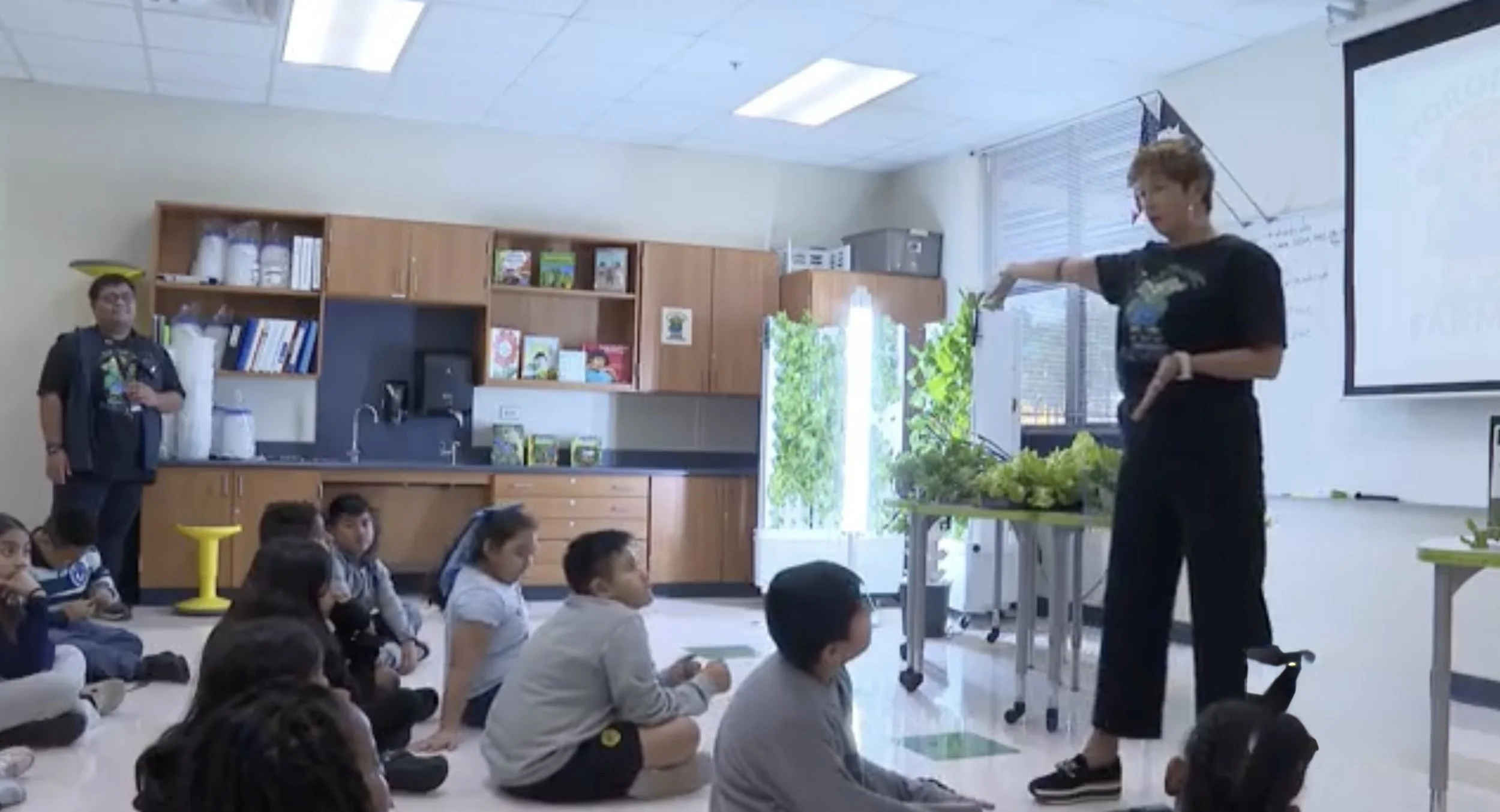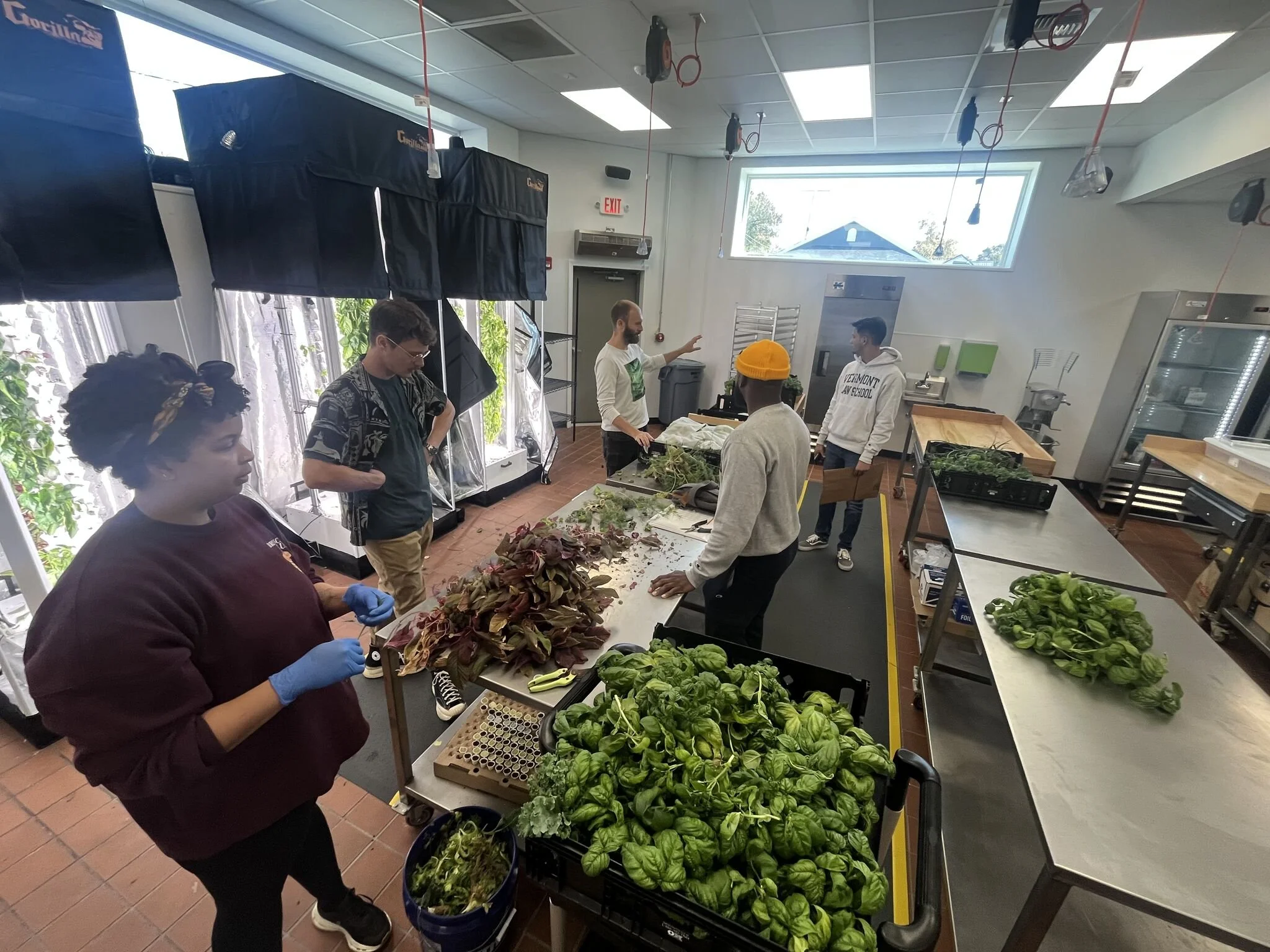
News About Farming in Shipping Containers & Limited Indoor Spaces
PODCAST - Joaquin Gonzalez on Scaling Hydroponic Fodder Systems for Feed Security
Interview explores how Joaquin Gonzalez Chilean ranch upbringing and agricultural engineering background led to a career focused on hydroponic fodder systems.
Eleusis Feed is targeting drought-prone regions and larger livestock operations with industrial-scale fodder production using significantly less water than conventional systems.
VIDEO - WISCONSIN: UW-Stevens Point at Marshfield Launches Hydroponic Garden Partnership
UW-Stevens Point at Marshfield has partnered with Fork Farms and Marshfield Clinic to provide healthy foods through hydroponic farming.
“It was a dream, but today the dream has come to fruition,” said Anthony Andrews, campus executive at UWSP at Marshfield.
Within one year, UWSP at Marshfield has turned one of its rooms into an indoor hydroponic garden. The plants grow with nutrient-rich water instead of soil.
USA - NEW JERSEY: 'Shroom Boom: Two River Mushrooms Scales Organic Supply as Specialty Sales Surge
For his next step in scaling up the operation, Sullivan got creative. He transformed a shipping container into a mushroom farm. He and a very small team spent four months adding insulation, drainage, lighting, humidification, environmental controls and HVAC.
The 40-foot container held a fruiting room, a packaging room and a mechanical room. The urban, vertical farm received USDA Organic certification and ramped up to produce about 500 pounds of hardwood mushrooms weekly.
VIEDEO - USA: Connecticut - 'Green Thumbs' Program Students at New Haven's High School in the Community Grow and Sell Mushrooms
Students at a New Haven magnet school are learning more than just standard classroom lessons - they're getting hands-on business, science and agricultural experience through the Green Thumbs program at High School in the Community.
Currently, students in the program are using their skills to grow a mushroom and lettuce farm in a 40-foot storage container.
VIDEO: Coolest Thing Made in Colorado’ This year? A Shipping Container Farm
A company specializing in vertical farming was awarded the “2025 Coolest Thing Made in Colorado” by the Colorado Chamber of Commerce on Thursday.
The statewide business lobbying group celebrated the top inventions of the state for the past four years with this recognition aiming to highlight different locally-made products.
Hippotainer: Fresh Food, Anywhere on Earth
When Jort Maarseveen, CEO of Hippotainer, stepped onto the stage at StartLife’s Demo Day, he didn’t begin with technology or business models. He began with a number that made the audience pause. “More than 2.3 billion people are food insecure right now,” he said. “They either have no access to food, no availability, poor quality diets, or unstable food supplies.
Purdue University Student Farm Spotlight: Growing Container Edition
Hello! My name is Kenzie Sandusky, and I’m a senior+ studying horticulture, (production and marketing ) at Purdue University! During my time at the container farms, I have several tasks to oversee in order to ensure a plentiful harvest for the CSA!
VIDEO - TEXAS: Students Use High-Tech Farm to Feed Classmates in Manor ISD
Inside Oak Meadows Elementary, school leaders have launched a program to hydroponically grow fresh lettuce and basil as part of the school district’s Farm to School initiative.
To grow vegetables hydroponically, plants grow in nutrient-rich water instead of soil.
Indoor Vertical.Farm Takes Root in Barbados Through Dutch-Caribbean Partnership
When the first containers of Indoor Vertical.Farm's pilot system arrived in Bridgetown earlier this year, it marked the beginning of a new phase for controlled environment agriculture in the Caribbean. The project, in partnership with the Government of Barbados, introduces a fully off-grid, vertical farming installation designed for research, training, and education.
USA - Pennsylvania: Local Teacher Brings ‘Flexible Farming’ to Life in Brookville Elementary Science Class
At Brookville Elementary, the freshest lettuce isn’t grown in a garden bed—it’s grown indoors, without even touching soil.
This innovative approach is thanks to a grant written by Kain Kennemuth, a second-year science teacher, who brought a fully functioning hydroponics system, called the Flex Farm, to the classroom.
High Ridge Hydro in Connecticut Scales Sustainable Growth with AmplifiedAg Technology
In Connecticut’s most populated city, High Ridge Hydroponics has redefined what it means to eat locally.
Over the last six years, this urban hydroponic container farm has become a trusted source of fresh greens for the Fairfield County community—supplying more than 50 restaurants, local farmers’ markets, and a growing network of distributors, schools, and small businesses in the greater Bridgeport area.
Lettuce With A Purpose: Campus Farm Cultivates Inclusion and Sustainability
Through the opening of Peace Produce at William Peace University, Pacer Dining is now serving lettuce grown right on campus.
Peace Produce, the campus’s new hydroponic farm, launched on Sept. 5 with a celebration that included samples of the farm’s fresh lettuce.
“The salads were served with two unique salad dressings prepared by Chef James Pelli,” Pacer Dining Marketing Coordinator Alex Strickler said.
USA - CALIFORNIA: CPP’s New Vertical Farm Grows Innovation, Sustainability and Student Learning
A new kind of farm has sprouted at Cal Poly Pomona — one that grows upward and indoors.
The first-ever vertical farming facility on campus is housed in a high-tech container built by Freight Farms that was donated to CPP through a partnership with the Electrical Power Research Institute (EPRI) and Southern California Edison (SCE). The project brings hands-on research and sustainable food production together in one compact, climate-controlled system.
USA - CONNECTICUT: Students Launch Innovative Indoor Mushroom Farm: Harvest Scholars Company Brings Sustainable Science to Life
In a repurposed 40-ft. shipping container, High School in Community students, known as Harvest Scholars Company, created a mushroom farm.
Harvest Scholars Company represents a new vision for science education—one that is hands-on, community-focused, and forward-thinking. (NHPS)
Community members are encouraged to share their recipes and cultural food traditions, helping students learn how science, food, and culture intersect.
VIDEO: Milan Tennessee Elementary School Grows Their Own Lettuce With New Hydroponic System
The nutrition staff oversees the hydroponic program and works hand-in-hand with students, who are learning valuable skills in planting, monitoring nutrient and PH levels, and harvesting the lettuce used in their own school meals.
Virginia Western Hydroponics Program Grows High Schoolers’ Skills
What is green and crunchy — and might help high schoolers unlock a future career?
The answer is all about educational partnerships. Virginia Western Community College has developed a 5-week hydroponics project for high school classrooms, using a hydroponics tower to grow Buttercrunch lettuce. A sensor creates graphical visualizations of data, and students interpret the data that has been collected over the project’s duration.
USA - INDIANA: Exciting To See The Grow Tents From anu™ (previously gropod) Being Harvested at Bedford Collab!
Bedford Collab is deeply committed to ensuring equitable access to nutritious food for everyone. As a vital part of our region’s food supply chain, we’re advancing a healthier future through collaboration and innovation.
Here, our management team and community partners are pictured harvesting fresh produce from our growing tents, produce that grows 365 days a year and directly supports local food initiatives.
VIDEO: Rooftop Gardens Program Offers At-Risk Youth a Path to a Brighter Future
Inside the freight farms are grow walls and nursery stations that used to grow only romaine lettuce, but have now expanded to radishes, carrots, and even strawberries. Each shipping container is equivalent to around three acres of farm land.
The freight farms give cohort participants a job as they help with the maintenance and harvest of produce each week. They get paid $15 per hour for up to 20 hours per week for each hour spent helping at the farm and in the classroom.



















